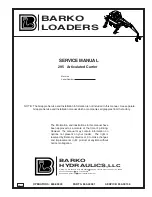
2. Check High-Voltage Supply
Instrument must be turned off when removing or re
placing the crt cover and cap.
a. Remove the crt cover and cap and connect a dc volt
meter capable of measuring at least —2500 V between pin
2 of the crt socket and chassis ground. Pin 2 of the crt is
negative with respect to the chassis.
b. CHECK—Voltmeter reading is between —1900 V and
-2 1 0 0 V.
c. Disconnect the voltmeter leads and replace the crt cap
and cover.
3. Adjust CRT Grid Bias (R851)
a. Connect a 50-12 termination to the EXT Z AXIS INPUT
connector located on the rear panel.
b. Adjust the front-panel FOCUS control to produce a
well-defined dot.
c. Rotate the A INTENSITY control fully counter
clockwise.
d. ADJUST— Grid Bias (R851) for a visible dot. Then
back off the Grid Bias potentiometer until the dot just
disappears.
e. Disconnect the 50-12 termination from the EXT Z AXIS
INPUT connector.
4. Adjust Astigmatism (R874)
a. Set:
A INTENSITY
Visible display
Channel 1 Input Coupling
DC
A SEC/DIV
5
ms
b. Connect the leveled sine-wave generator output via a
50-S2 cable and a 50-12 termination to the CH 1 OR X input
connector.
c. Set the generator to produce a 50-kHz, 4-division
display.
Adjustment Procedure— 2236 Service
d. ADJUST— Astig (R874) and the front-panel FOCUS
control for the best defined waveform.
e. Disconnect the test equipment from the instrument.
5. Adjust Trace Alignment
a. Position the trace to the center horizontal graticule
line.
b. ADJUST—The front-panel TRACE ROTATION con
trol for optimum alignment of the trace with the center hori
zontal graticule line.
6. Adjust Geometry (R870)
a. Set:
CH 1 VOLTS/DIV
50 mV
A SEC/DIV
0.1 ms
b. Connect 50-
ms
time markers from the time-mark gen
erator via a 50-12 cable and a 50-12 termination to the CH 1
OR X input connector.
c. Adjust the Channel 1 POSITION control to position the
baseline part of the display below the bottom horizontal
graticule line.
d. Adjust the SEC/DIV Variable control for 5 markers per
division.
e. ADJUST— Geom (R870) for minimum curvature of the
time markers at the left and right edges of the graticule.
f. Set the Channel 1 Input Coupling switch to GND.
g. ADJUST— Geom (R870) for minimum curvature of the
baseline trace when positioned at the top and bottom hori
zontal graticule lines using the Channel 1 POSITION
control.
h. Set the Channel 1 Input Coupling switch to DC.
i. Repeat parts e through h for optimum compromise be
tween the vertical and horizontal displays.
j. Disconnect the test equipment from the instrument.
5-5
Summary of Contents for 2236
Page 10: ...2236 Service viii The 2236 Oscilloscope ...
Page 74: ...Theory of Operation 2236 Service 3 30 ...
Page 102: ...Performance Check Procedure 2236 Service 4 21 Figure 4 1 Test setup for DMM common mode check ...
Page 242: ...2236 Service 4204 34 Figure 9 6 CTM basic block diagram ...
Page 243: ...DMM POWER S U P P LIE S 2236 Service F ig u re 9 7 C T M d e ta ile d b lo c k diag ram ...
Page 254: ...S I 0 O I 5 1 S O i 4204 21 C IR C U IT BOARD INTERCONNECTIONS ...
Page 267: ...1 2 3 4 5 6 7 8 9 J T K L M_ _ ___ N___l _ P____l S ...
Page 271: ...1 2 3 4 5 6 7 8 9 lO P2SO O U1 A TRIGGER V T O W2500 5 A 223 R E V A P R W G ...
Page 275: ......
Page 280: ......
Page 285: ...A 6 F IL T E R B O A R D lo c a te d u n d e r H V S h ie ld ...
Page 313: ...2236 Service T O U I 3 0 0 4 8 K T O UI300 II S K 0 2 2 3 6 Z Z O A Z 2 OPTION IA ...
Page 317: ...A 10 C O U N T E R T IM E R M U L T IM E T E R B O A R D A D J U S T M E N T LO C A T IO N S ...
Page 319: ...2236 Service TROUBLESHOOTING GUIDE 4206 99 4204 69A ...
Page 323: ...9 ...
Page 324: ...2 REV APR 1986 ...
Page 325: ...2236 SERVICE ...
Page 326: ......
Page 332: ......
Page 333: ...2236 SERVICE ...
Page 334: ...2 4 2 1 ...
Page 338: ......
















































